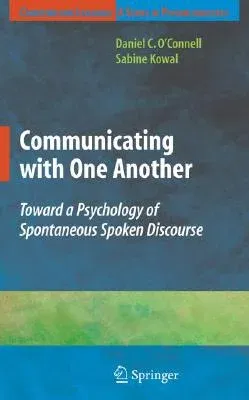Sabine Kowal
(Author)Communicating with One Another: Toward a Psychology of Spontaneous Spoken Discourse (2009)Hardcover - 2009, 8 September 2008

Qty
1
Turbo
Ships in 2 - 3 days
In Stock
Free Delivery
Cash on Delivery
15 Days
Free Returns
Secure Checkout

Part of Series
Cognition and Language: A Psycholinguistics
Part of Series
Cognition and Language
Part of Series
Cognition and Language: A Series in Psycholinguistics
Part of Series
Cognition and Language-A Series in Psycholinguistics
Print Length
265 pages
Language
English
Publisher
Springer
Date Published
8 Sep 2008
ISBN-10
0387776311
ISBN-13
9780387776316
Description
Product Details
Author:
Book Edition:
2009
Book Format:
Hardcover
Country of Origin:
US
Date Published:
8 September 2008
Dimensions:
23.37 x
15.75 x
1.78 cm
Genre:
Psychological
ISBN-10:
0387776311
ISBN-13:
9780387776316
Language:
English
Location:
New York, NY
Pages:
265
Publisher:
Series:
Weight:
521.63 gm